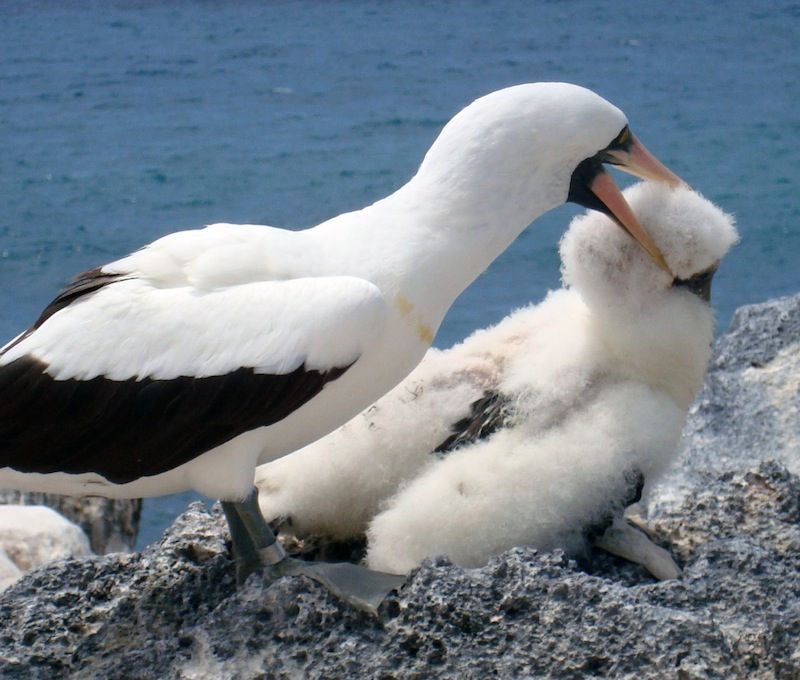Like Humans, Abused Baby Birds Grow Into Bullies

Much like humans, birds that are abused as tots are more likely to become abusers later on, a new study finds.
Adult Nazca boobies, seabirds that live in colonies on the Galapagos Islands, often beat up on their neighbors' young. The new research finds these bullied nestlings turn into bullies as adults.
"We were surprised by the intense interest that many adults show in unrelated young, involving really rough treatment," study researcher Dave Anderson, a Wake Forest University biologist, said in a statement. "A bird's history as a target of abuse proved to be a strong predictor of its adult behavior." [See photos of the bullying birds]
The bird bullies — mostly female — patrol the breeding colonies, waiting for parents to leave their offspring to go forage. Then the adults pounce on the young birds, biting, pecking and even making sexual advances. The young are often left stressed and bleeding.
Using leg bands, Anderson and his colleagues tracked the birds over three breeding seasons, as nestlings grew up and returned to their birthplace to lay their own eggs. They reported their results in the October issue of the journal The Auk.
The finding that abused Nazca babies become victimizers later on is eerily similar to what social scientists have learned about the cycle of abuse in humans. According to the U.S. Department of Health and Human Services, about 30 percent of abused and neglected children will grow up to victimize their own children.
Researchers even believe that this cycle may have the same root in both birds and humans: Stress hormones surge after bird abuse, according to a recent study by another Wake Forest researcher, doctoral student Jacquelyn Grace.
Sign up for the Live Science daily newsletter now
Get the world’s most fascinating discoveries delivered straight to your inbox.
"It's fascinating that what many would consider an extremely complex human phenomenon is also occurring — perhaps through the same physiological mechanism — in Nazca boobies, which are more closely related to crocodiles than mammals," Grace said in a statement. "Both studies suggest Nazca boobies might be a good model system to begin understanding the mechanisms underlying the cycle of violence in humans."
You can follow LiveScience senior writer Stephanie Pappas on Twitter @sipappas. Follow LiveScience for the latest in science news and discoveries on Twitter @livescience and on Facebook.

Stephanie Pappas is a contributing writer for Live Science, covering topics ranging from geoscience to archaeology to the human brain and behavior. She was previously a senior writer for Live Science but is now a freelancer based in Denver, Colorado, and regularly contributes to Scientific American and The Monitor, the monthly magazine of the American Psychological Association. Stephanie received a bachelor's degree in psychology from the University of South Carolina and a graduate certificate in science communication from the University of California, Santa Cruz.











